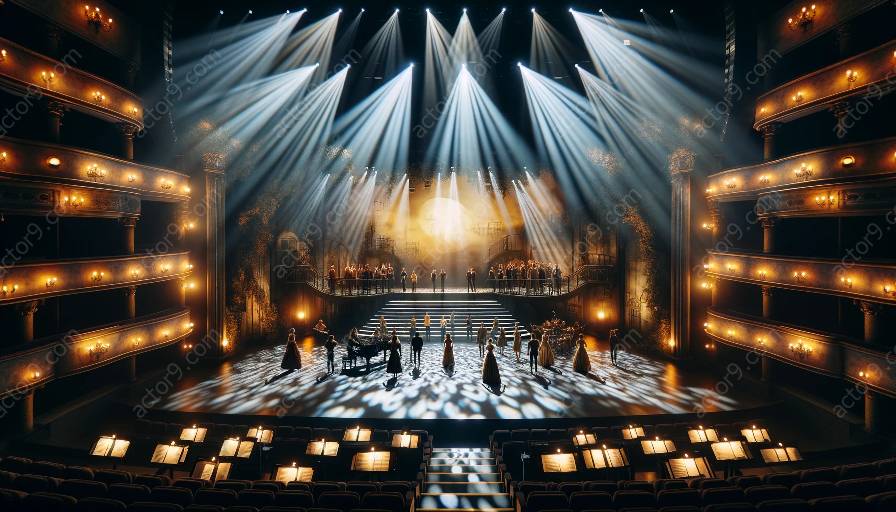Musical theatre is a powerful medium that evokes various emotions and perceptions from its audience. The combination of music, acting, and staging creates a unique immersive experience that tugs at the heartstrings and leaves a lasting impact. In this topic cluster, we will delve into the intricate relationship between audience perception, emotions, and lighting design in the context of musical theatre.
Audience Perception in Musical Theatre
The audience's perception in musical theatre is shaped by a multitude of factors, including the storyline, character portrayal, vocal performances, choreography, and overall production quality. The ability of the performers to convey emotions and tell a compelling story greatly influences how the audience connects with the performance. The set design and stage elements also play a crucial role in setting the tone and ambiance, impacting the audience's perception of the show.
Emotions Evoked by Musical Theatre
Musical theatre has the power to evoke a wide range of emotions, from joy and elation to sadness and introspection. The emotional journey experienced by the audience is often intertwined with the characters' arcs and the thematic elements explored in the production. The captivating melodies, heartfelt lyrics, and poignant performances work in unison to evoke genuine emotional responses from the audience.
The Impact of Lighting Design
Lighting design holds a pivotal role in shaping the audience's perception and influencing their emotional experience during a musical theatre performance. The strategic use of lighting can accentuate key moments, create dramatic silhouettes, and evoke specific moods. Subtle changes in lighting can signal transitions in the storyline, while dynamic lighting effects can intensify the emotional impact of musical numbers and pivotal scenes.
Interplay of Lighting Design and Emotions
The interplay of lighting design and emotions is a nuanced dance that adds depth and dimension to the audience's experience. The use of warm, vibrant hues may enhance feelings of warmth and happiness, while cool, subdued lighting can convey a sense of melancholy or suspense. Lighting transitions and dynamic cues can guide the audience through emotional peaks and valleys, amplifying the overall impact of the performance.
Creating Memorable Audience Experiences
In conclusion, the intersection of audience perception, emotions, and lighting design in musical theatre showcases the intricate art of captivating and engaging audiences. By understanding and harnessing the power of these elements, theatre creators can craft unforgettable experiences that resonate deeply with spectators, leaving a lasting imprint on their hearts and minds.




































